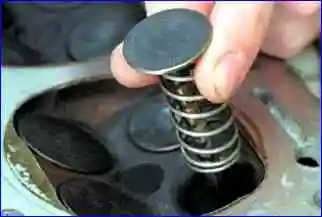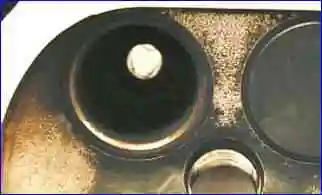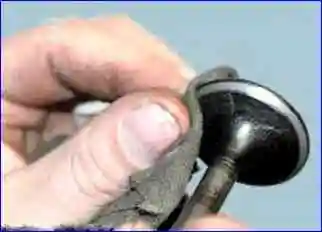To grind valves, it is most convenient to use a special mechanical device (reversible drill)
In addition, ready-made manual valve holders are available for sale.

Fig. 1. Device for grinding valves
If they are not available, you can use a device made according to the drawing (Fig. 1).
In addition, you will need: lapping paste, kerosene, a weak spring, passing along the outer diameter into the hole of the valve seat.

Clean the valve from carbon deposits.
Apply a continuous thin layer of lapping paste to the valve chamfer.

Place a pre-selected spring onto the valve stem and insert the valve into the guide sleeve from the side of the combustion chamber, lubricating the valve stem with a layer of graphite lubricant.
Graphite lubricant protects the guide bushing from getting abrasive from the lapping paste into its holes and facilitates rotation of the valve during lapping.
Place a valve grinding tool onto the valve stem (or, with some tension, a rubber tube to connect the valve to a reversible drill).

Turning on the drill at the minimum speed (in reverse mode) or rotating the device (in the case of manual lapping) alternately half a turn in both directions, lap the valve, periodically pressing it to the seat, then loosening the pressing force.

An external sign of satisfactory lapping is the uniform matte gray color of the working chamfer of the valve and the valve seat in the block head

After lapping, thoroughly wipe the valve and seat with a clean cloth and rinse to remove any remaining lapping paste.
Check the valve for tightness by installing it with springs and cotters in the head.
Then place the head with the combustion chambers facing up, plug the spark plug hole and pour kerosene into the combustion chamber.
If kerosene does not leak into the channel of the block head within 3 minutes, the valve is sealed.





